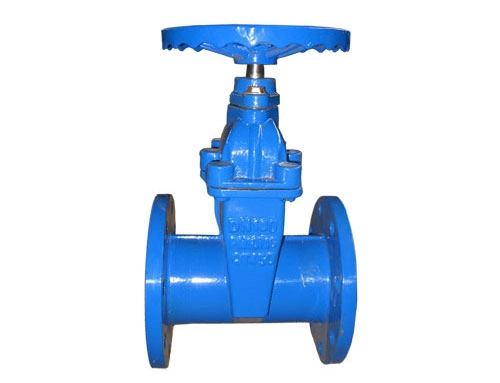The practice that definite specification, categories and working pressure meeting the requirements is imperfect in the current environment of market economy. For competition, valve manufacturers innovate respectively, forming their own enterprise standards and product features, under the conception of unified design of valves.
So, the more detailed technical requirements should be put forward and consensus acquired by coordination with manufacturers should be necessary to become an accessory of valve procurement contract.
1. General requirements
The specifications and categories of valves should meet the requirements of pipeline design documents.
The model of valve should be marked with the requirements based on number of national standards. If the standards are enterprise standards, guideline supplements should be indicated.
For working pressure, under the conditions having no influences on prices, bearable working pressure should be higher than actual working pressure; when the valve is off, any side of valve can ensure 1.1 times of working pressure and cannot leak; if the valve is opened, the body should endure 2 times of valve working pressure.
In terms of manufacturing standard, pursuant number of national standard should be indicated. If the standards are enterprise standards, procurement contract should be attached with enterprise document.
2. Valve materials
The body should be mainly made of nodular cast iron and marked with grade and actual physical chemical test data of cast iron.
The stem of valve should be made of stainless. The stem of large dimension valve also should be embedded with stainless steel.
The nut should adopt casting aluminum brass or casting aluminum bronze. The hardness and strength should be higher than those of stem.
In terms of lining of stem, the hardness and strength also should be higher than those of stem. Moreover, the lining cannot cause electrochemical corrosion with stem and body, when soaked into water.
Materials of sealing face
a. Due to different categories of valves, the sealing ways and requirements for materials differ;
b. For common
wedge gate valve, materials of copper ring, fixed form and grind should be indicated;
c. For soft sealing gate valve, physical and chemical test data and health inspection data of materials used for rubber lining of plate should be stated.
d.
Butterfly valve should be marked with the materials used for sealing face on body or disc; physical chemical inspection date should be indicated, especially hygienic requirements, ageing resistance and abrasion resistance of rubber; in general, NBR (nitrile rubber buna) and EPDM are adopted; reclaimed rubber is not allowed to be mixed.
Packing of shaft
a. The valves in pipeline network are not opened or closed frequently. The packing is required to not move in several years. The packing should have ageing resistance and maintain sealing performance for a long time.
b. The packing of stem should have better sealing performance if it is opened or closed frequently.
c. For the above requirements, the packing of shaft should not be replaced for lifetime or ten more years.
d. If the packing need to be replaced, the replacement should be carried out under the situation of water pressure.
3. Shifting transmission case
The corrosion for materials of box should be the same as body.
The box should have sealing measurements. The box can be soaked into 3 meters water column after being assembled.
Regulating nut of on-off limiting device on box can be set inside or outside of box. However, it should be operated by using special tools.
The design of transmission mechanism should be reasonable. During on-off, it can only drive shaft to swing and the shaft should not exile up and down. Occlusion of drive disk assemblies should be suitable and cannot cause separation skid.
The box and sealing parts of shaft cannot be connected into entirety having leakage. Otherwise, leakage prevention measures should be taken. Impurities should not exist in box and occlusion of gear should be protected by using lubricating grease.
4. Operating mechanism of valve
On-off direction should follow clockwise closing.
The valves in pipeline network are opened or closed manually. The revolution should not be overmuch.
For convenient for single operation, the maximum torque should be 240 N.M under working pressure of pipe.
5. Performance test
When some specifications are batch manufacturing, authoritative institution should be entrusted to test the following the performances:
a. Torque under working pressure;
b. Continuous on-off time can maintain tight sealing under working pressure;
c. Flow resistance coefficient under water delivery.
The followings should be inspected before leaving factory:
a. When the valve is opened, the body should ensure two times of working pressure;
b. When the valve is closed, two ends should bear 1.1 times of working pressure respectively without leakage; however, for metal sealing butterfly valve, leakage value should not be higher than required value.
6. Corrosion prevention on valve
Internal and external body should shot blasted and cleaned for rust cleaning. Powdery non-solvent epoxy resin should be sprayed on body in electrostatic and the thickness should be higher than 0.3mm. For large valves, spraying non-solvent epoxy resin is difficult. Similar epoxy paint also should be sprayed.
Internal body and every part of disc need corrosion prevention. One the one hand, it cannot corrode when the valve is soaked into water and electrochemical corrosion cannot cause between two metals; on the other hand, smooth surface reduce flow resistance.
Hygienic requirements of corrosive resistant epoxy resin or paint inside body should have inspection report from relative authoritative institutions. Chemical and physical performance also should meet relevant requirements.
